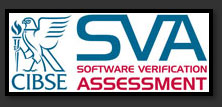Knowledgebase
Understanding the Integration of Arc Fault Detection Devices (AFDD) for Compliance in Certification and Reports to BS7671
In compliance with BS 7671:2018+A2:2022 standards, the recording of Arc Fault Detection Devices (AFDDs) in Electrical Installation Certificates (EICs), Electrical Installation Condition Reports (EICRs), and Minor Electrical Installation Works Certificates (MEIWC) is crucial for ensuring comprehensive documentation of protective measures within electrical installations. AFDDs, as outlined in Chapter 42 for Protection against thermal effects, play a pivotal role in addressing arc faults, distinct from devices like Circuit-breakers (CBs) to BS EN 60898 or Residual Current Devices (RCDs) to BS EN 61008, which provide different types of protection. This distinction is particularly emphasized in BS7671 clause 421.1.7, which underscores the necessity of additional protective measures alongside AFDDs.
It's crucial to recognize that if an AFDD is paired with, for instance, an RCBO, the device undergoes product testing and certification for both BS EN 62606 and BS EN 61009. This dual certification applies to any other standard, such as BS EN 61008, claimed by the manufacturer. Furthermore, an AFDD adhering solely to BS EN 62606 offers arc fault protection only when not paired with another device. In such cases, electrical designers must select additional protective devices to provide overcurrent/fault protection for the installation.
In the context of the model forms schedule of circuit details in Appendix 6 of BS7671, specific listings for BS EN 62606 are not provided. Instead, the relevant standard associated with the protective devices that form part of the AFDD, such as BS EN 61009, would be inputted. It's noteworthy that AFDDs themselves are not separately recorded in the Overcurrent Protective Device column or RCD column of the forms, as these columns primarily capture information about primary protective devices offering shock, overcurrent, and residual current protection. Nevertheless, there's no hindrance in including the AFDD standard number, BS EN 62606, if desired.
Recording both standards for Overcurrent Protective Devices and Residual Current Devices on the forms can be very useful. For instance, inputting standards like 61008/62606 or 61009/62606, or even 62606 paired after other relevant fuse standards, provides vital information for electrical installers and inspectors. This data enables them to discern whether the device primarily serves additional or fault protection and whether the installation aligns with necessary disconnection times for compliance with BS 7671.
In summary, documenting the specific standards for overcurrent protective devices and Residual Current Devices in EICs, EICRs, and MEIWCs is fundamental for ensuring accurate identification of protective devices within electrical installations. This comprehensive approach offers insight into the protective measures implemented within the system, contributing to overall electrical safety and compliance.
|
Overcurrent Protective Device |
Residual Current Device |
Detail recorded in Overcurrent Protective Device BS (EN) column |
Detail recorded in RCD BS (EN) column |
|
CB |
N/A |
BS EN 60898 |
N/A |
|
CB |
RCD |
BS EN 60898 |
BS EN 61008 |
|
CB |
AFDD/RCD |
BS EN 60898 |
BS EN 61008/BS EN 62606 |
|
AFDD/CB |
N/A |
BS EN 60898/BS EN 62606 |
N/A |
|
AFDD/CB |
RCCB |
BS EN 60898/BS EN 62606 |
BS EN 61008 |
|
AFDD/CB |
RCD |
BS EN 60898/BS EN 62606 |
BS EN 61008 |
|
N/A |
RCCB |
N/A |
BS EN 61008 |
|
RCBO |
RCBO |
BS EN 61009 |
BS EN 61009 |
|
AFDD/RCBO |
AFDD/RCBO |
BS EN 61009/BS EN 62606 |
BS EN 61009/BS EN 62606 |
NOTE: Alternatively, BS EN 62606 can be recorded on the remarks column instead of the BS(EN) columns
Special thanks to:
G. E. Brown IEng MIET of Electrium (A Siemens company)
Gary Gundry MIET
Mr Shahid Khan BSc (Hons) MSc CEng MIET of Eaton Electric Limited
Michael Peace CEng MIET MCIBSE (The IET)
Also Read
-
Exploring PD CLC/TR 50480:2011 and the UK National Annex NA: Additional Earth Conductors and Steel Armour in Parallel (Views: 1056)
-
Selectivity Study (Views: 12482)
-
Power Factor Correction Calculations (Views: 8158)
-
Surge Protective Devices - SPD (Views: 6760)
-
Arc Fault Detection Devices - AFDD (Views: 6593)





